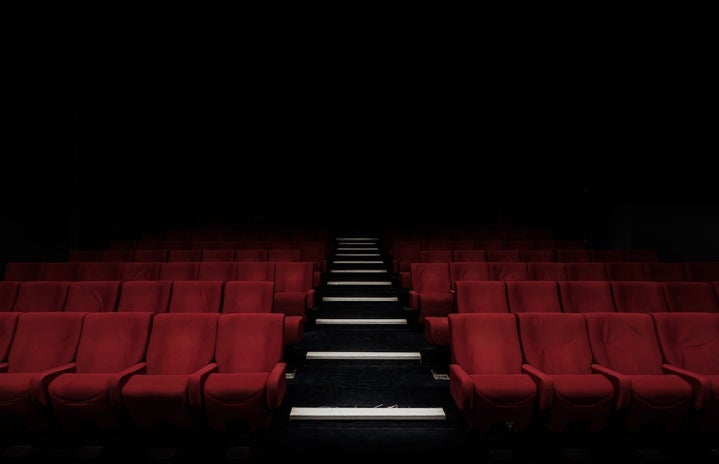Wes Anderson’s new movie The French Dispatch has cast a twee spell on New York City with its release this past week. Walking down the West Village, one can’t help but notice the dozens of colorful berets lined up in front of a bright yellow cafe, Le Sans Blague, which one would say looks like something out of a Wes Anderson movie if this weren’t the truth. The cafe is a pop-up location, modeled after a location in the fictional town Ennui-Sur-Blasé, promoting Anderon’s latest release. Apart from the free coffee and French pastries at Le Sans Blague luring in movie-goers, the thousands of print editions of the fictional, The French Dispatch, being handed out at various locations seemed to have caused a temporary resurgence of print journalism in NYC.
Described as a love letter to journalism, The French Dispatch pays homage to The New Yorker with a fictionalized and frenchified version of the journal. The story sets out with an obituary for the editor of The French Dispatch, Arthur Howitzer (Bill Murray), and the journal itself, following the death of the editor as the team works on the release of their last edition. Bill Murray is no stranger to playing characters like Arthur Howitzer, his portrayal of Steve Zissou from A Life Aquatic Steve Zissou proved him to be perfectly fit for the role of the emotionally distant, yet capricious leader. Arthur Howitzer is known for his maxim – “try to make it look like you write that way on purpose”- which ultimately resulted in a publication with reporters to whom journalistic objectivity is nothing more than an urban legend. Arthur Howitzer’s advice could be a motto for Wes Anderson’s creative career as his stories are packed with absurdities that somehow make perfect sense only in the worlds that he creates.
Before introducing the three main feature stories, the screen is taken over by Owen Wilson in a beret, biking around and giving a tour of the town Ennui-Sur-Blasé. The first feature story named “A Concrete Masterpiece” by J.K.L. Berensen (Tilda Swinton) covers an incarcerated artist Moses Rosenthaler (Benicio Del Toro) whose painting, “Simone, Naked, Cell Block J. Hobby Room”, revolutionized the art world and made him a pioneer of modern art, all thanks to being discovered by another inmate who happened to be a wealthy art dealer Julien Cadazio (Adrian Brody). About halfway through this feature, Berensen casually discloses that she was sexually intimate with the subject of her story, Moses. This is the first indicator that The French Dispatch is not exactly what people allude to when thinking of a tribute film for journalism (it certainly isn’t like Spotlight and The Post where investigative journalists take on corruption and injustice), rather it’s a highly romanticized view of the field.
The second feature begins as the first story crumbles into humorous chaos. “Revisions to a Manifesto” by the journalist Lucinda Krementz- played by the Oscar-winning actor Francis McDormand- is an ode to May 68. Mrs. Krementz writes a tale of student protests following a youth revolutionary leader Zeffirelli played by Timothee Chalamet. The Concrete Masterpiece is filled with the classic Andersonian elements, characters that seem to lack the capability to experience emotion, gray morality, and a nostalgic soundtrack. I want to emphasize gray morality since journalistic neutrality is brought up numerous times in this story, even after Mrs. Krementz takes Zeffirelli’s virginity and even edits and finishes his manifesto. “Revisions to a Manifesto” is arguably the most experimental part of the movie. It introduces a cast that is brand new to the Wes Anderson canon, along with some of the characters speaking entirely in French, and depicts politics of the past (however, a revolution led by quirky chess players is as political as the films get).
More of the typical Wes Anderson tropes of child geniuses and caricatures of villains make an appearance in the third and final tale, “The Private Dining Room of the Police Commissioner” by the food critic Roebuck Wright played by Jeffrey Wight inspired by the civil rights activist James Baldwin. Wright covers Nescaffier (Steve Park), a legendary chef in the police department. This feature is packed with familiar faces, which certainly attracts a new audience.
Creating memorable characters that make movies into cult classics- such as Max Fisher from Rushmore or Margot Tennenbaum from The Royal Tenenbaums– is something Wes Anderson is masterful at. His latest release seemed to struggle to achieve this, simply because we do not see the characters enough to fully care for them. The anthology structure makes perfect sense for the concept of the movie- a newspaper. The short run time allowed for a bigger, star-studded cast but it also meant less screen time for each character.
The French Dispatch is a nightmare for those who are not a fan of Wes Anderson’s signature whimsical style as it is arguably his most Wes Andersoney film yet. GQ magazine writes: “his Andersonian lens is so thick it’s nearly opaque”. Like his previous films, his latest release is not short of dense dialogue with witty humor and references that take a few rewatches to fully understand. Anderson says, “The French Dispatch is three things: an anthology, The New Yorker and a French movie.” It certainly feels like a French movie, with black and white frames (a radical statement for Wes Anderson considering his acclaim for a pastel color palette) and editing style that usually alludes to movies of Jean Luc Godard.
You will either find the movie abundantly charming and leave the theater fully under its spell, thinking of a place to buy your own colorful beret, or find it overwhelming.
The French Dispatch feels like a live-action animation, a novel that has come to life (even more so than its predecessors) and despite this, manages to be melancholy. After all, it is a story of nostalgia, an ode to the glory days of print journalism, modern art, student revolutionaries, and The French New Wave.


